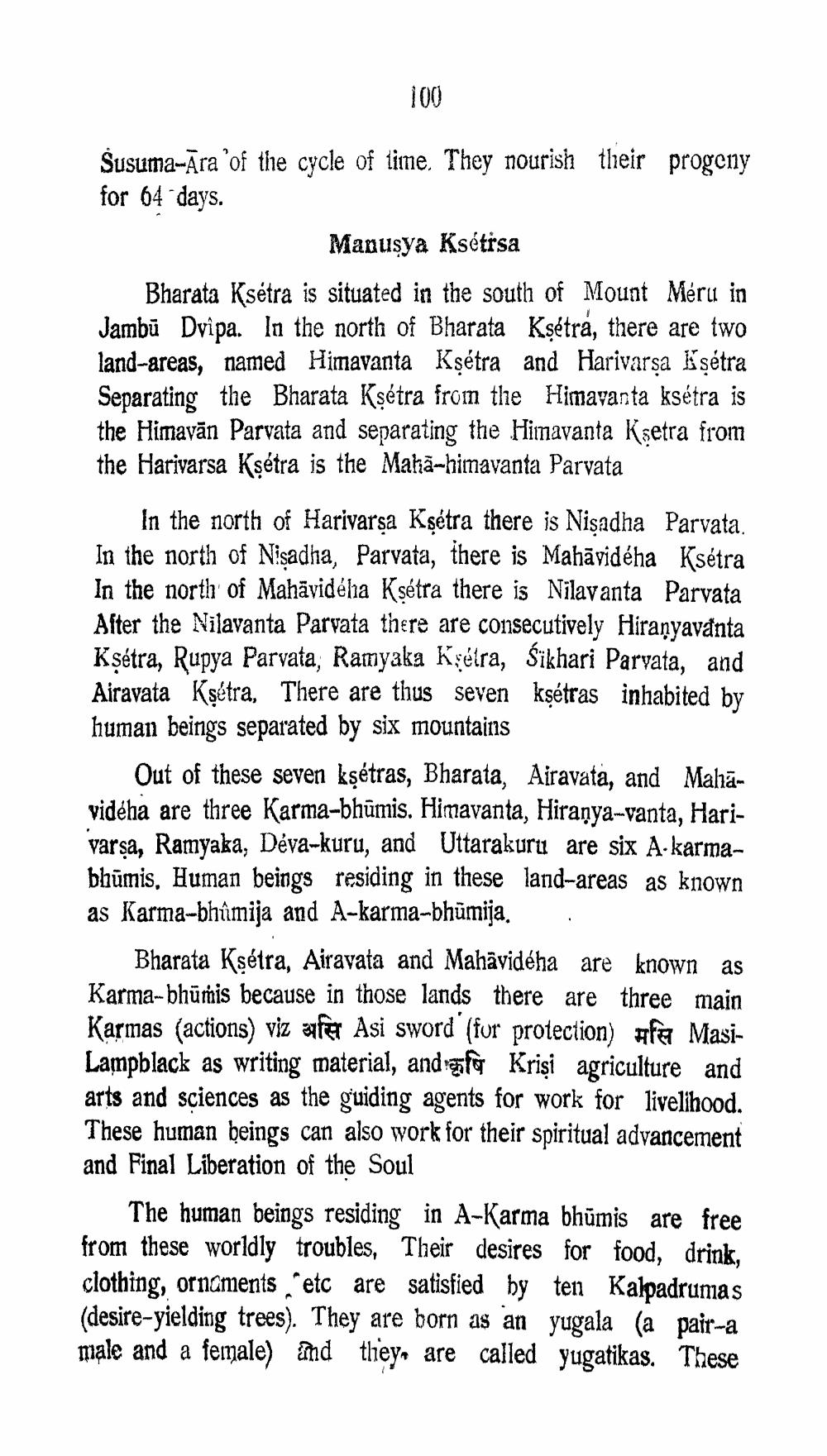________________
100
Susuma-Āra ’of the cycle of time. They nourish their progeny for 64 days.
Manuşya Ksétisa Bharata Ksétra is situated in the south of Mount Meru in Jambū Dvipa. In the north of Bharata Ksétra, there are two land-areas, named Himavanta Kşetra and Harivarsa Ksétra Separating the Bharata Ksétra from the Himavanta ksétra is the Himayān Parvata and separating the Himavanta Ksetra from the Harivarsa Ksétra is the Malā-himavanta Parvata
In the north of Harivarsa Ksétra there is Nişadha Parvata. In the north of Nisadha, Parvata, there is Mahāvidéha Ksétra In the north of Mahāvidéha Ksétra there is Nilavanta Parvata After the Nilavanta Parvata there are consecutively Hiranyavanta Ksétra, Rupya Parvata, Ramyaka Krétra, Sikhari Parvata, and Airavata Ksétra. There are thus seven kşetras inhabited by human beings separated by six mountains
Out of these seven ksétras, Bharata, Airavata, and Mahravidéha are three Karma-bhūmis. Himavanta, Hiranya-vanta, Harivarsa, Ramyaka, Déva-kuru, and Uttarakuru are six A-karmabhūmis. Human beings residing in these land-areas as known as Karma-bhîmija and A-karma-bhūmija. .
Bharata Kşetra, Airavata and Mahāvidéha are known as Karma-bhūmis because in those lands there are three main Karmas (actions) viz sfe Asi sword (for protection) afa MasiLampblack as writing material, and so Krişi agriculture and arts and sciences as the guiding agents for work for livelihood. These human beings can also work for their spiritual advancement and Final Liberation of the Soul
The human beings residing in A-Karma bhūmis are free from these worldly troubles, Their desires for food, drink, clothing, ornaments etc are satisfied by ten Kalpadrumas (desire-yielding trees). They are born as an yugala (a pair-a male and a female) and they are called yugatikas. These




